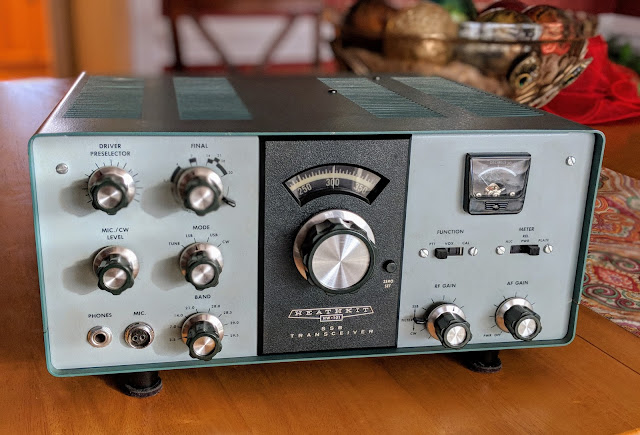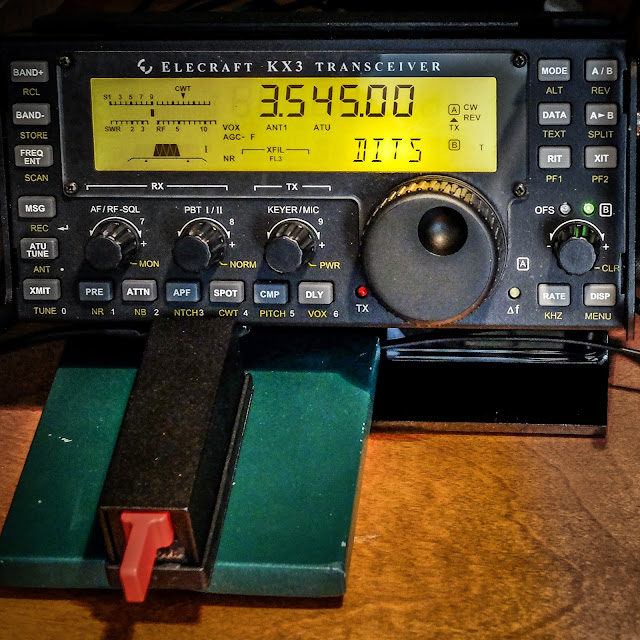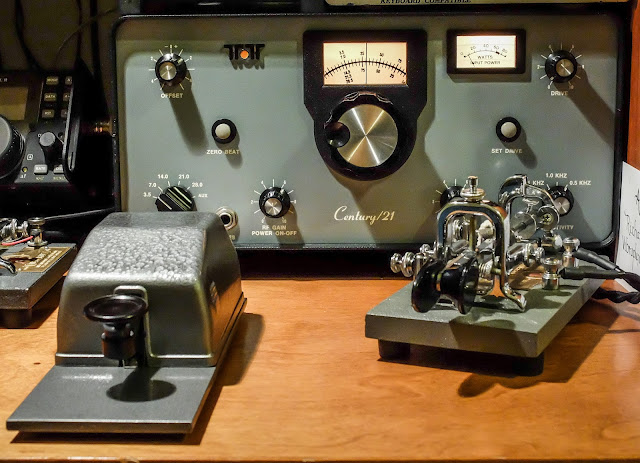Oh Boy, what have I gotten myself into
 |
| TUBES |
A few months after re-entering the hobby in 2015 I picked up a TenTec Century/21. It has been one of my favorite radios to operate and it is the most aesthetically pleasing radio I own. After working with it's older (circa 1977) discrete transistorized technology and debugging some of it's problems, I became interested in building kits to learn about electronics. I built a number of radio kits from different sources and some of the mini-module kits from Elecraft.
But I kept wondering about tube radios. I came to the hobby well past the tube radio era and although I've read a lot about valve technology I didn't have any first hand experience. I kept watching auctions for old Heathkits and Military radios and even bid on a few but lost the bids.
This past Christmas I decided that in 2018 I'd do something about this lingering interest. I knew I'd eventually want to operate one mobile because, well that would certainly make it harder. The power requirements of tubes are orders of magnitude greater than the QRP transistorized rigs I'd purchased. Not knowing what I was doing I figured I could re-work an old Heathkit HP-13 power supply to give me what I'd need for an old military radio like the GRC-9.
 |
| Heathkit HP-13a |
Unsurprisingly, I was the only bidder and got one for $30 along with the odd grove power connectors that it uses. But I didn't do my research, and soon learned that the magic for these high voltage power supplies lies in the very specific design of their transformers. In the case of the HP-13 it is operated much like an old military vibrator power supply with two germanium transistors acting as the vibrator. Current is applied to to the core until it saturates and then a specific voltage determined by the number of turns is generated, the saturation drops the current to that winding and it starts over with the other transistor and the other winding. I couldn't easily, or practically lower the 800v high voltage down to 580v required by the military radio I wanted and even the low voltage windings produce 300v and 250v respectively which is far beyond the 105v needed by the military radio.
I was warned off actually purchasing a military vibrator power supply due to a number of issues so I decided I'd start out with the radio this supply was designed for, a Heathkit HW-101. All the electrolytic capacitors have to be replaced, and I plan to replace the diodes to be on the safe side as well. I'm hoping the old transistors are still serviceable as I can't find any information on direct replacements for those. I've ordered the replacement caps, diodes and resistors so I'll see how my refurb of this old power supply works out. Working with voltages that can kill me is a bit daunting and I'm being very careful with the limited power-up tests I've performed so far.
Heathkit HW-101
That brings me to the newest arrival. If you read my blog you know I like to do photography and it's no fun to photograph ugly radios so I kept watching auctions for HW-101s that were in good cosmetic condition. I knew I'd have to do a good bit of refurbishment on whatever I ended up with but at least I could start with a "looker".
 |
| Heathkit HW-101 |
I plan, of course, to use it primarily for CW. I'm aware that this radio is NOT particularly pleasant for CW due to the clacking relay as well as the poor filtering, but I've gotten accustomed to hearing lots of CW stations at once while working with my Century/21 so I think I can adapt. All my other radios have full break-in so this will be a challenge to deal with, but I'm up to seeing what it was like for old time hams.
 |
| Crystal filter |
While it has a crystal filter, 6dB of filtering at 400Hz will not offer much rejection to the out of band signals. I guess I'll see.
Admittedly this is far from QRP radio but I will endeavor to operate mobile at least a few times just for the experience. I plan to operate at QRP levels to the extent I'm able. There's just so much for me to learn.
If I don't maim myself or burn my house down, be on the lookout for posts as I resurrect the power supply and the old girl and get it on the air. I have some ideas for photography involving glowing tubes that I think will be fun to figure out. My bigger challenge is that I have no room for this thing at my operating position, so I'm trying to figure that out as well.
So drop me a line if you have restoration experience with these rigs. Of course I'm reading what I can and look forward to learning how to align the transmit tubes and all the things I've had absolutely no experience with in the world of transistorized radios.
That's all for now
So warm up your tubes and raise your expectations
72/73
Richard AA4OO



